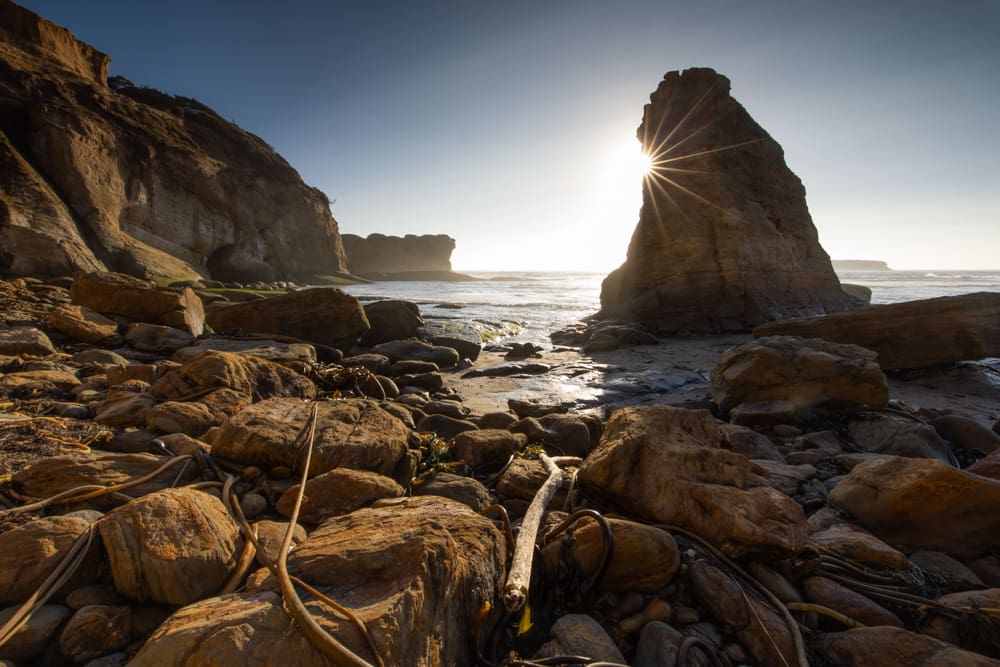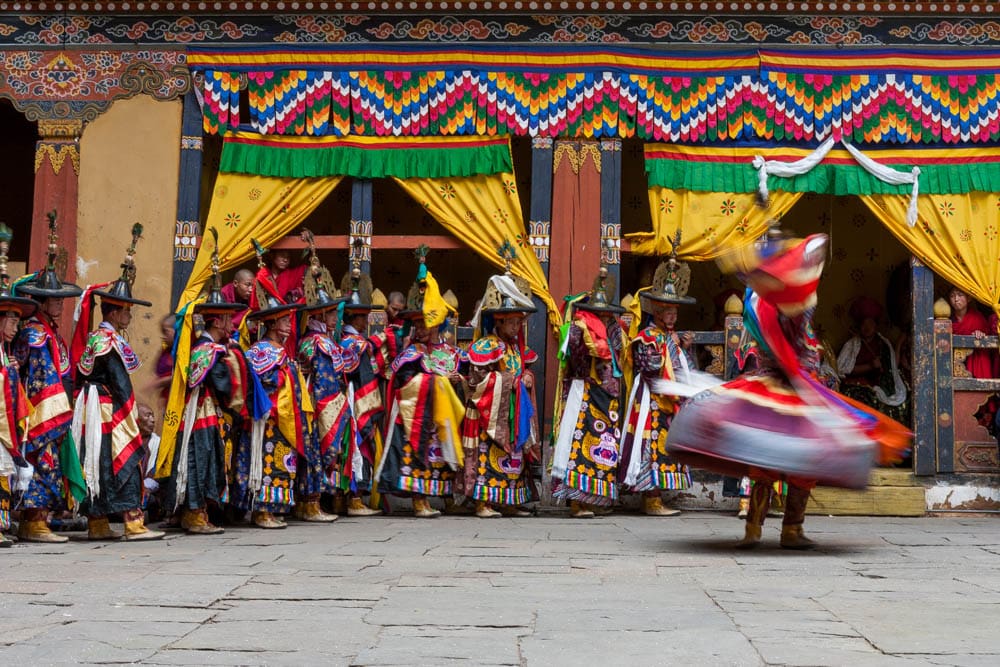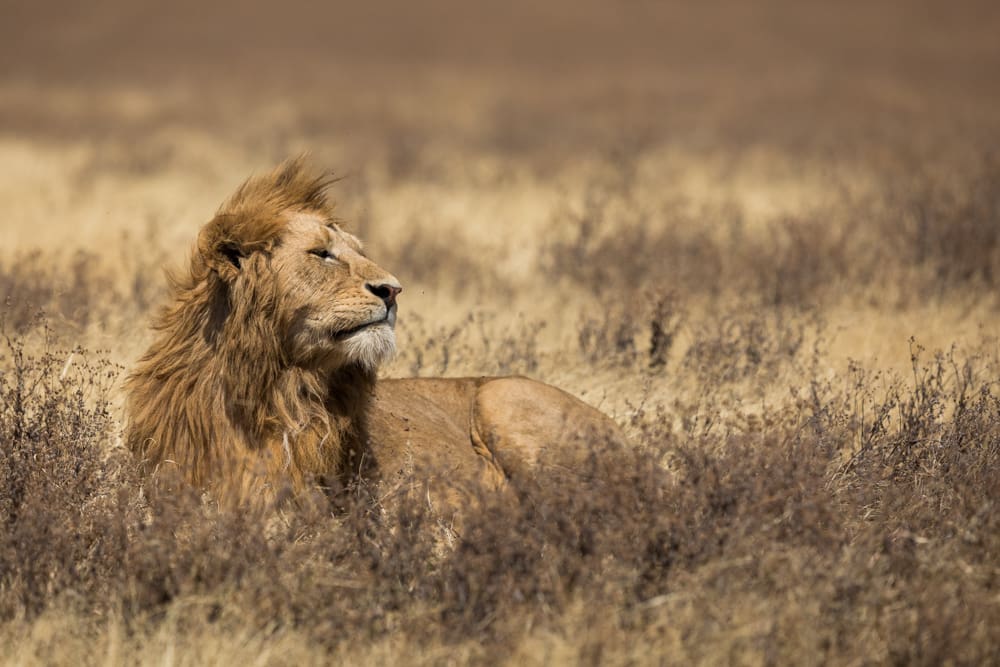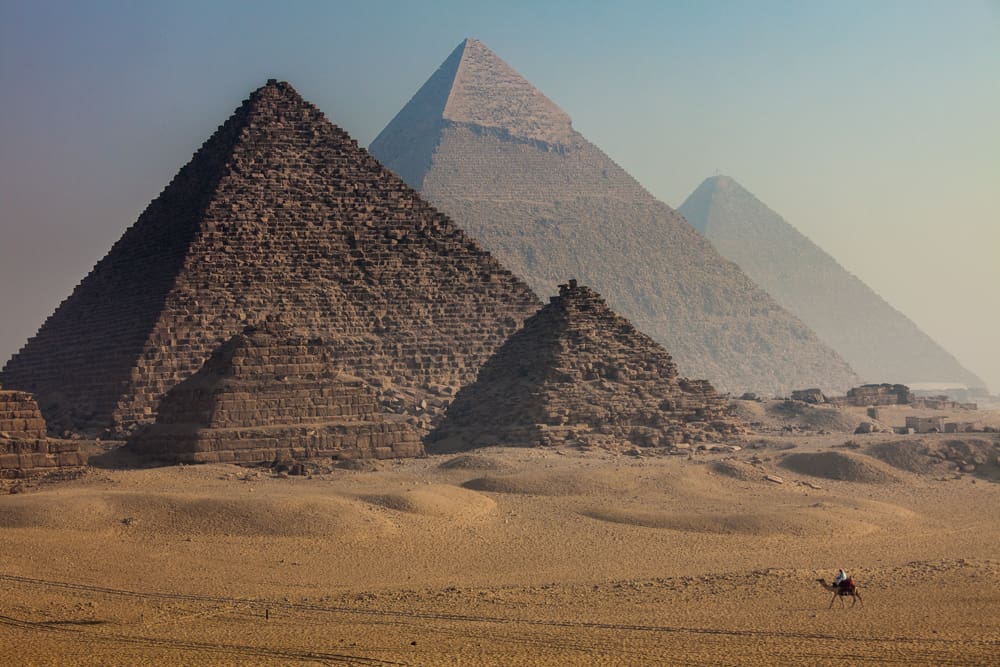The Galapagos Islands sits high up on most every list for top travel destinations, for both general travelers and photographers. Perhaps it was because of this high status that I’ve avoided it until now; that might have been a mistake.
The well documented islands seem to be a highlight of most every natural history TV special narrated by Sir David Attenborough. The remote Galapagos islands and their unique wildlife is the setting that helped Charles Darwin see the world with new eyes.
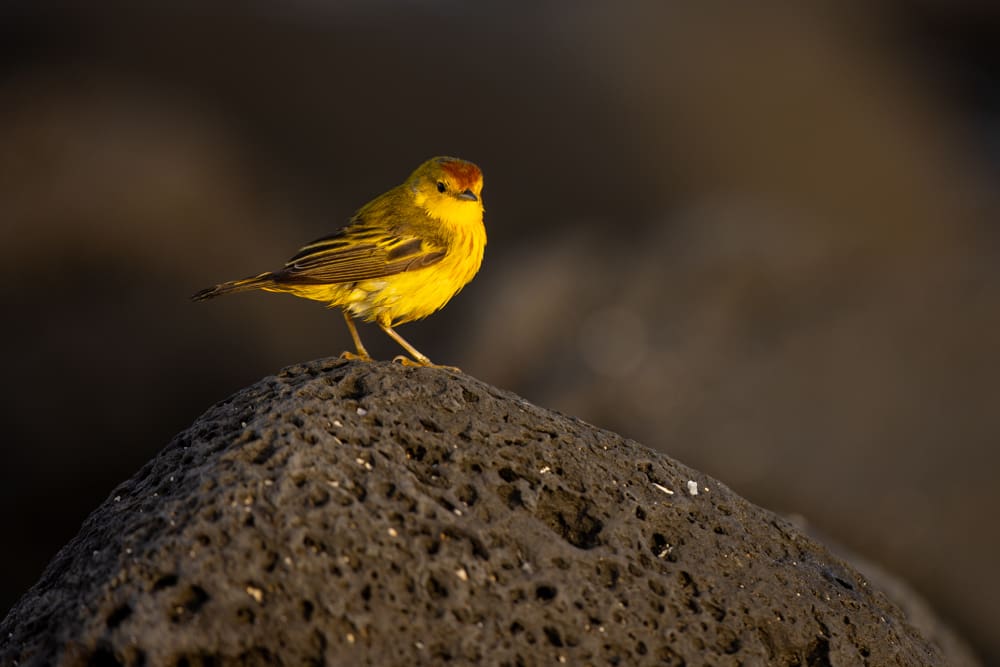
Canon R5, EF 300MM F/2.8 @ 300MM | F/2.8 | 1/800 SEC | ISO 200
yellow warbler
The islands comprise just 5.3% of the Earth’s land area, but are home to 20% of the world’s wildlife diversity. Now that I’ve had the chance to see them with my own eyes, I can now see what I was missing, and what makes this a very special location.
A photographers point of view
The collection of volcanic islands straddles the equator 600 miles off the coast of South America. The islands are pristine, the weather is wonderful, the water is a comfortable temperature year-round, but the unmitigated star of the show is the wildlife. The lack of early settlers, natural isolation, and now its protected status has left a large variety of unique animals undaunted by the presence of people.

Canon R5, RF 24-70MM F/2.8 @ 50MM | F/11 | 1/60 SEC | ISO 100
Panorama stitch
Viewing and photographing wildlife doesn’t get much easier or better than here, in the Galapagos Islands. The variety and proximity you have to the wildlife rivals a zoo, except that you don’t have to photograph them through glass or bars, and they’re in their natural environment.
Long lens
From a focal length perspective, my most useful setup was a full-frame camera (Canon R5) and a 300mm lens. I did also take a backup crop-frame camera, Canon R7 (1.6x crop), as well as a 1.4x teleconverter and a 2x teleconverter for reaching out a bit further. I used the R7 and the 1.4x for some bird shots; but I never needed, nor used the 2x teleconverter. It’s one of the only locations where I’ve struggled to get the shot because the animals were too close.
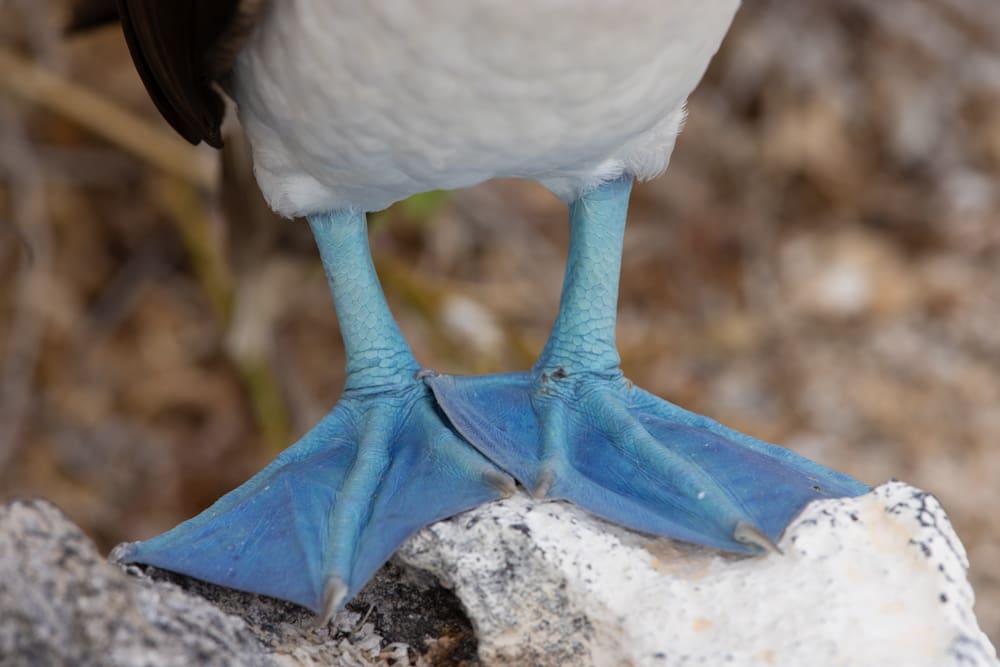
Canon R5, EF 300MM F/2.8 @ 300MM | F/8 | 1/100 SEC | ISO 400
blue-footed booby
Ways to Photograph the Wildlife
There are three different ways in which you can photograph the animals, let me walk you through them.
By boat
If you visit the Galapagos via a small cruise ship (16 passengers or less), you’ll have ample opportunity to photograph from your home ship. This may provide a great platform for photographing Great Frigatebirds as they soar above the boat. You may also encounter whales, dolphins, or other marine life where a longer zoom lens may come in handy.
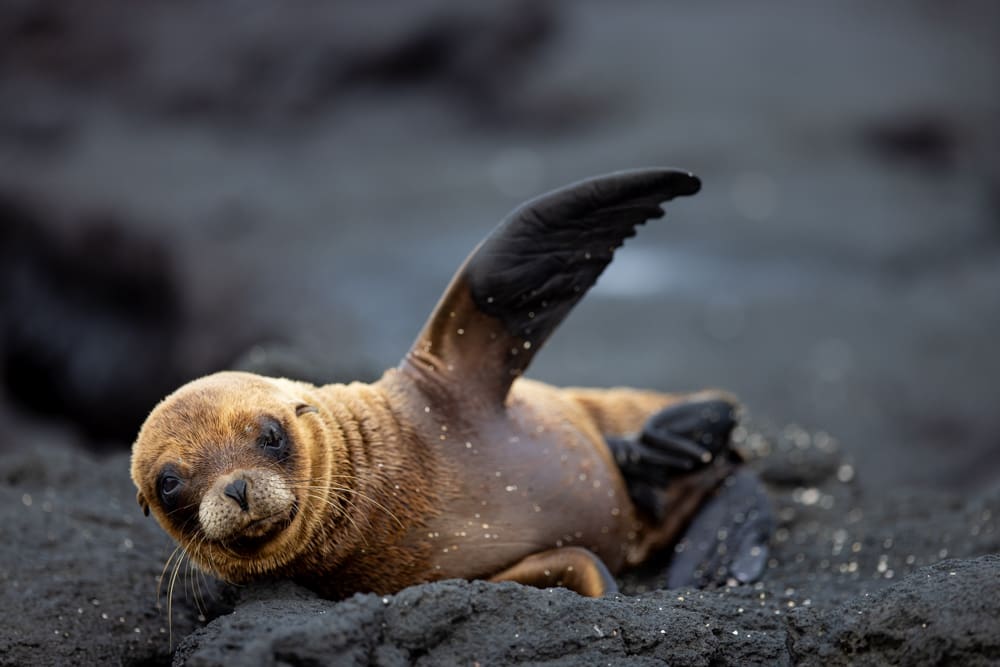
Canon R5, eF 300MM F/2.8 @ 300MM | F/2.8 | 1/800 SEC | ISO 400
galapagos sea lion
The inflatable zodiac style boat used for transporting people between the ship and shore is called a “Panga” here in the Galapagos. The pangas are also used to touring the shoreline where going ashore is too difficult, dangerous, or not allowed because of the area’s protection status. The ability to travel in shallow water and into small lagoons make it a great platform for photography. Being near the shoreline, you’ll be at the confluence of action for mammals, reptiles, birds, and marine life.
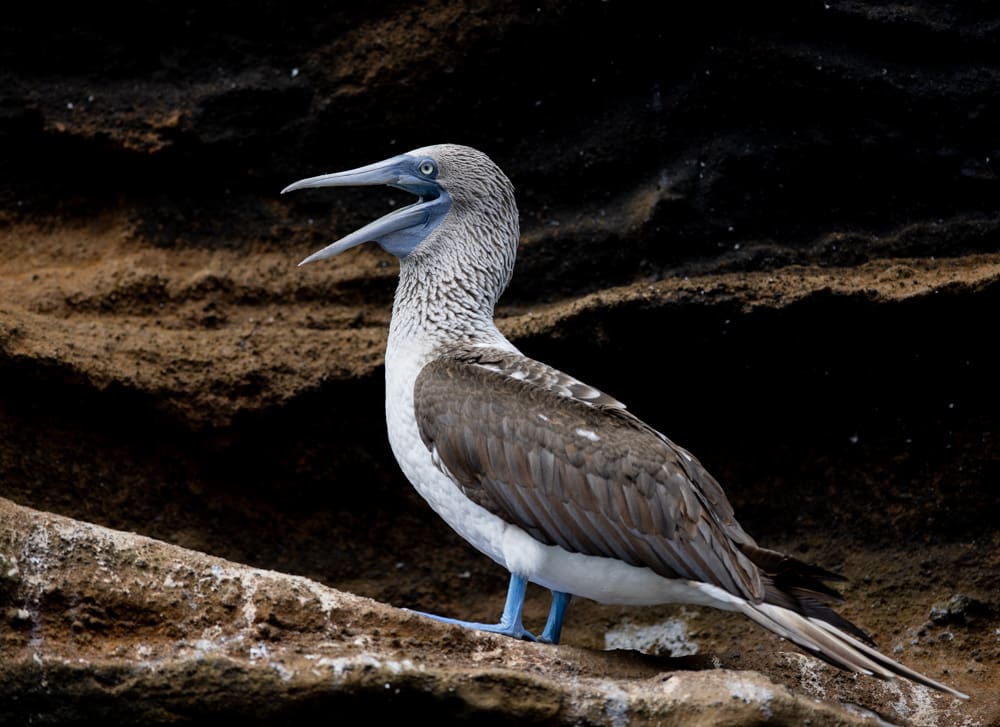
Canon R5, eF 300MM F/2.8 @ 300MM | F/2.8 | 1/1250 SEC | ISO 200
blue-footed booby
By Land
Far and away the most valuable time you will have photographing is when you can get your feet on the land itself. More than 97% of the Galapagos Islands falls into protected National Park status, which means shore excursions are special experiences.
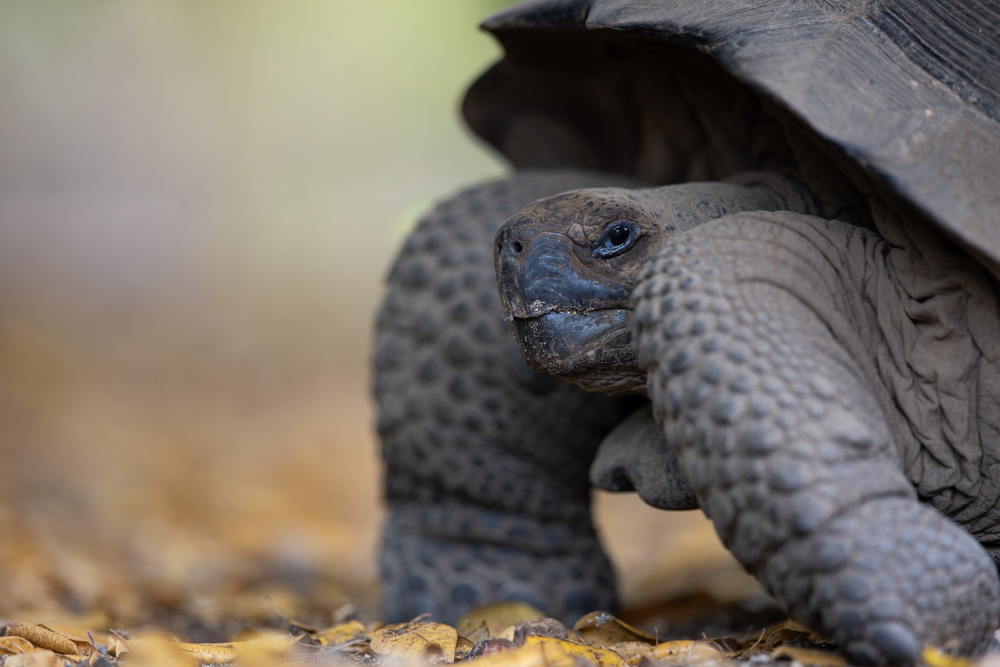
Canon R5, eF 300MM F/2.8 @ 300MM | F/2.8 | 1/200 SEC | ISO 200
galapagos giant tortoise
Traveling by foot gives you more freedom for composition and timing. Here you will have opportunities to get up close to legendary Giant Tortoise, Land and Marine Iguanas, as well as nesting Blue-Footed Boobies. With most animals undaunted by your presence, getting frame-filling wildlife shots is extremely easy.
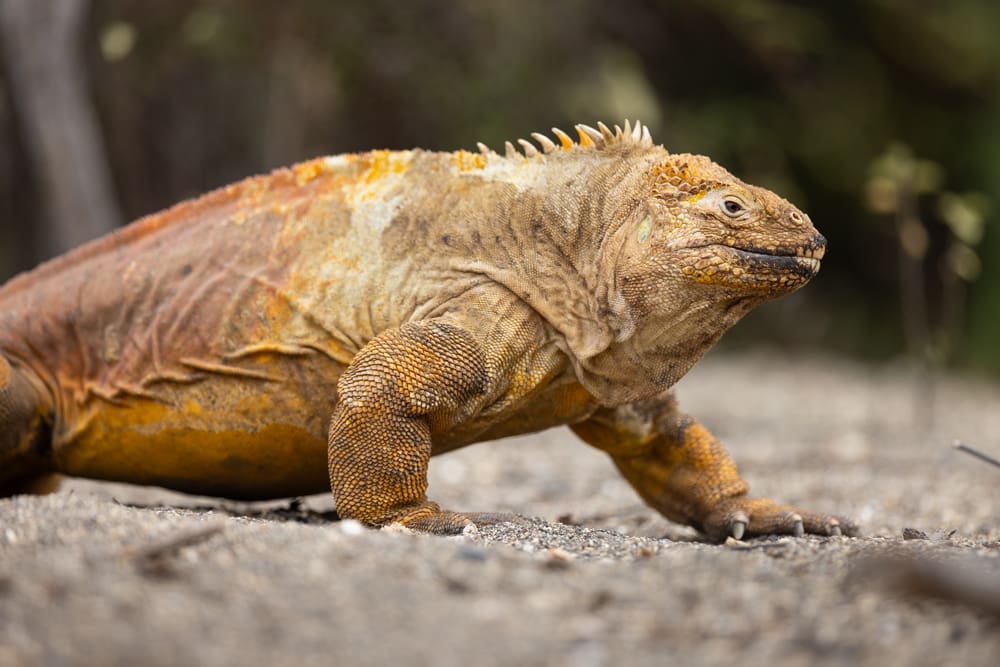
Canon R5, eF 300MM F/2.8 @ 300MM | F/2.8 | 1/1000 SEC | ISO 200
land iguana
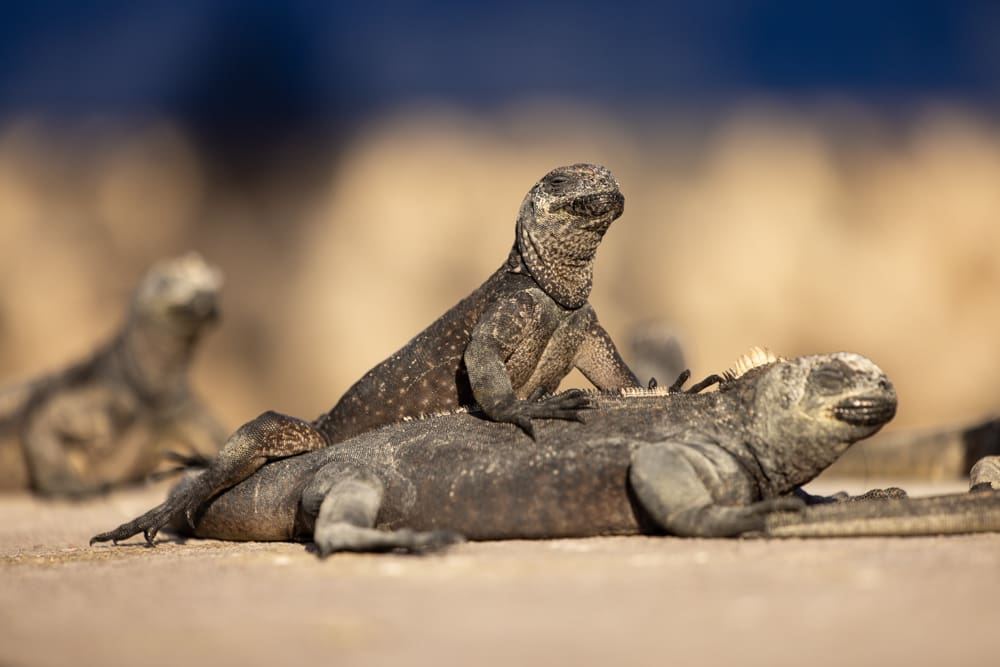
Canon R5, RF 70-200MM F/4 @ 200MM | F/4 | 1/5000 SEC | ISO 400
marine iguana
Under Water
Snorkeling is one of the most popular activities around the islands as it gets you access to a whole ecosystem not visible from above the waterline. Underwater photography is not my specialty but I brought a small waterproof point-and-shoot specifically to take advantage of these opportunities.
For those new to snorkeling, you’ll be blown away by what you see. As for the photography, it will be a bit more challenging to get great shots. A lot of factors come into play with underwater photography: quality of gear, animal activity, and clarity of the water.
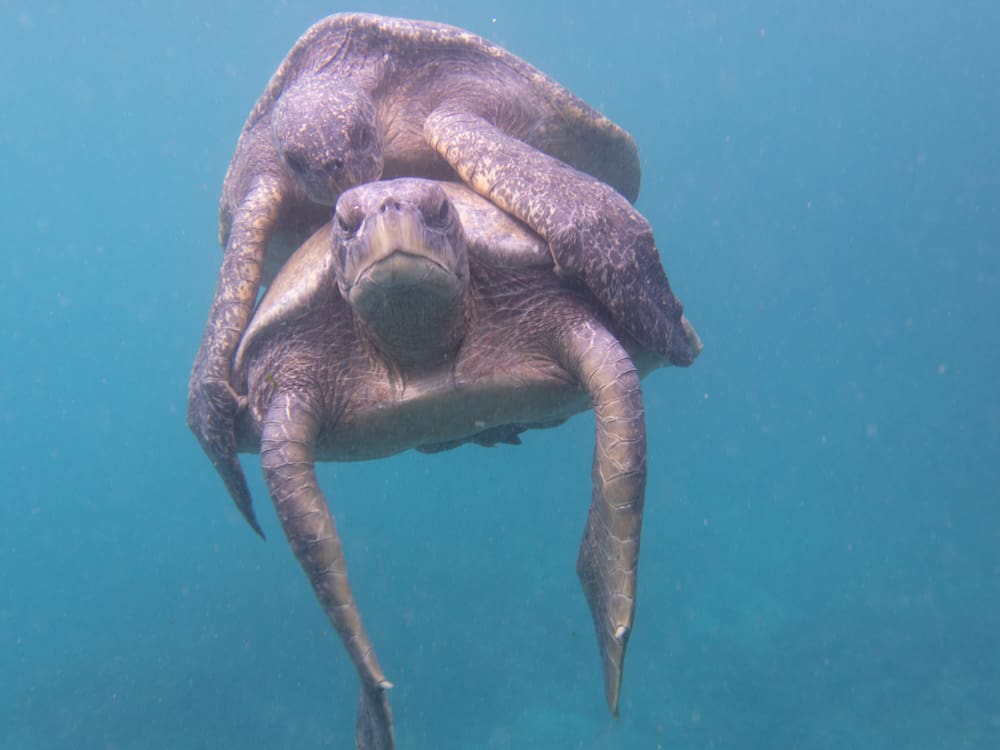
Olympus TG-6 @ 5.79MM | F/3.2 | 1/160 SEC | ISO 100
[full-frame equivalent: 32mm]
sea turtle
There is clearly a skill set required for moving your body and positioning yourself to capture the right animal activity in the right light that I have yet to master. Never-the-less, I enjoyed every chance to get in the water where I could capture scenes unlike I’ve ever seen before.
Protected Area
With the Galapagos being a highly protected region, my main concern about visiting was that I would be kept so far from the animals that I couldn’t get any descent images. This is simply not the case; proximity to a wide variety of wildlife is frequent and easy.
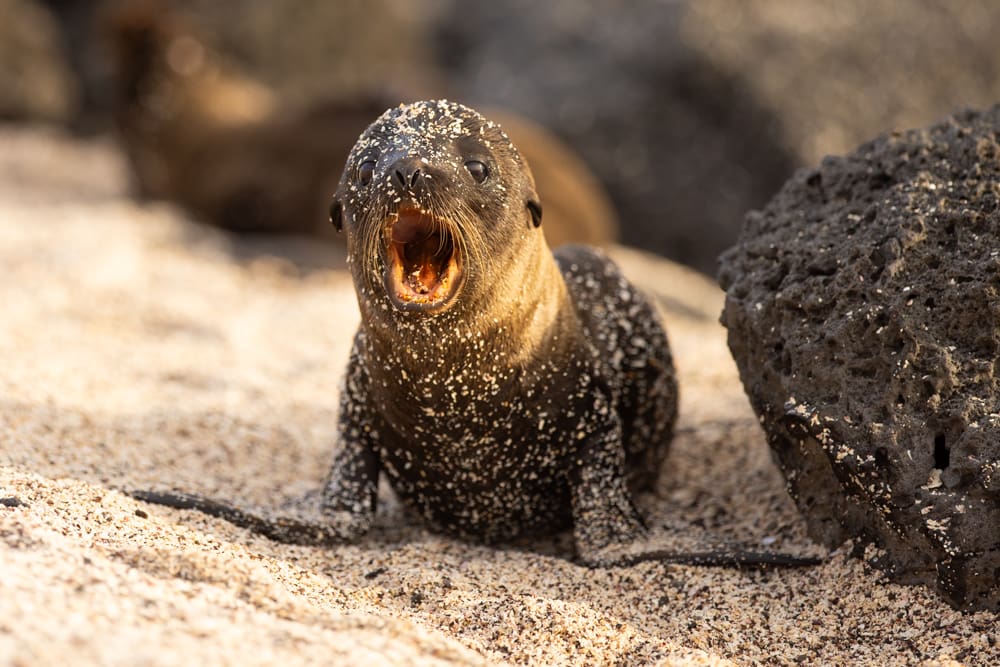
Canon R5, eF 300MM F/2.8 @ 300MM | F/2.8 | 1/800 SEC | ISO 500
galapagos sea lion
The islands are heavily protected, so don’t plan on telling the captain where you’d like to be let off the boat and that you’d like to roam cross-country on your own for the day. There are rules in place about where you can and can’t go. Rules about when you can and can’t be in a location, and rules about how many people can be there. Yes there are lots of rules, but this place exists because of those rules.
In the end, the rules were not enough to dampen the photographic experience. Unique wildlife opportunities were a regular occurrence. Great photos were everywhere and you didn’t need a ridiculously long lens to get a good shot.
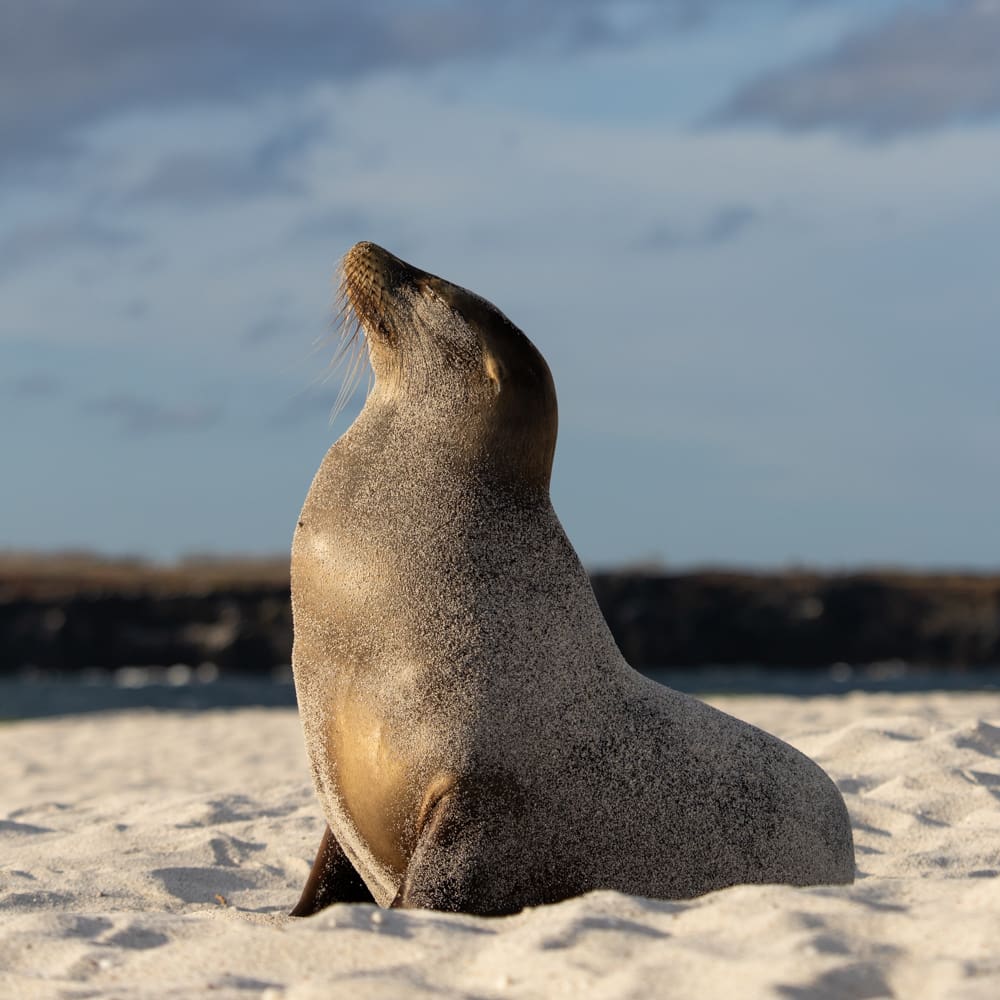
Canon R7, RF 70-200MM F/4 @ 91MM | F/4 | 1/2500 SEC | ISO 200
galapagos sea lion
Wild Galapagos scouting trip
My 10 day tour was to serve as a scout trip to see if the Galapagos would make for a good photographic tour. How can I know a place is good for photography without experiencing it myself? I knew from about the second day onward that with some tweaks to a standard tour it could make for a fantastic photographic tour as well as an amazing travel experience.
Within days of arriving home from my trip I chartered a boat and secured a crew so that I can lead a tour of 14 people through the Galapagos. The great benefit of our Wild Galapagos tour will be that this tour will be designed and catered specifically for photographers. We’ll be maximizing our photographic opportunities in time and location.
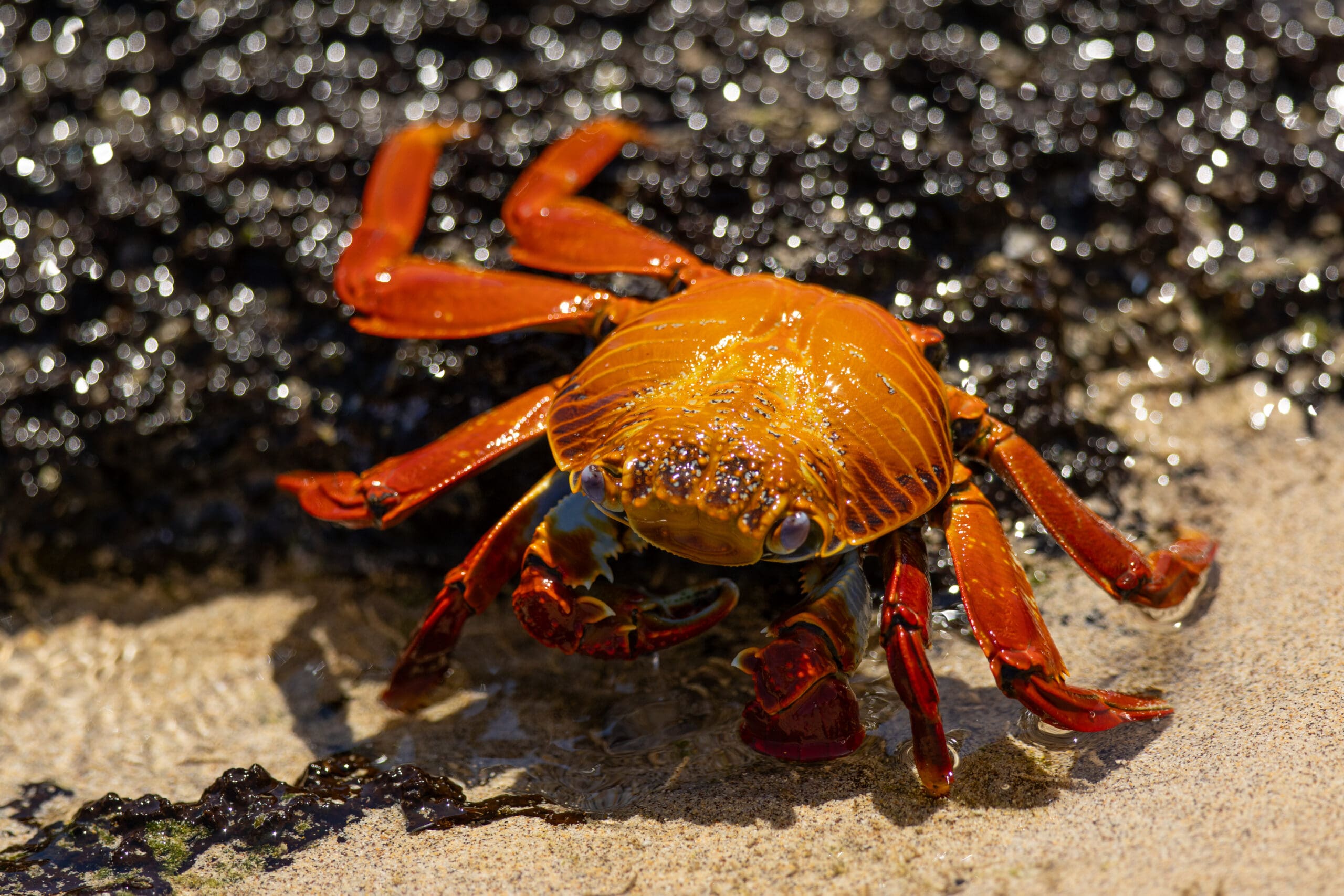
Canon R7, eF 300MM F/2.8 @ 300MM | F/2.8 | 1/2000 SEC | ISO 100
sally lightfoot crab
Like every ship-based tour, we will have a naturalist onboard to help explain the natural history and give us the inside knowledge of a local. These guides are highly trained and a great source of information.
On our tour I, and my wife Michelle, will be your photographic guides. We’ll be there to assist and advise wherever necessary. We’ll have photo reviews to share images and see what everyone else is capturing.
I’m certain that our Wild Galapagos Photo Tour will be a dream photographic experience. A small group of like-minded individuals traveling through a pristine and beautiful landscape with a common goal. If you’ve every wanted to photograph the Galapagos, the opportunity of a lifetime is now here.
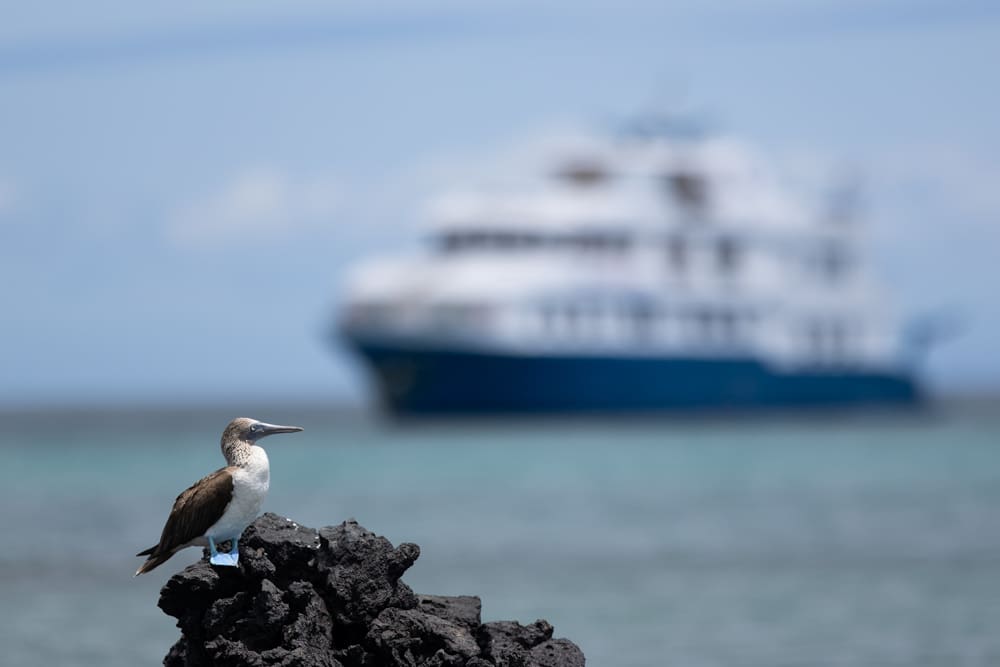
Canon R7, eF 300MM F/2.8 @ 300MM | F/2.8 | 1/2500 SEC | ISO 100
blue-footed booby & “natural paradise” ship
Become part of John’s inner circle
Sign up for the newsletter here — it’s free.
Want to become a better photographer?
Check out John’s selection of photography and camera classes here.
